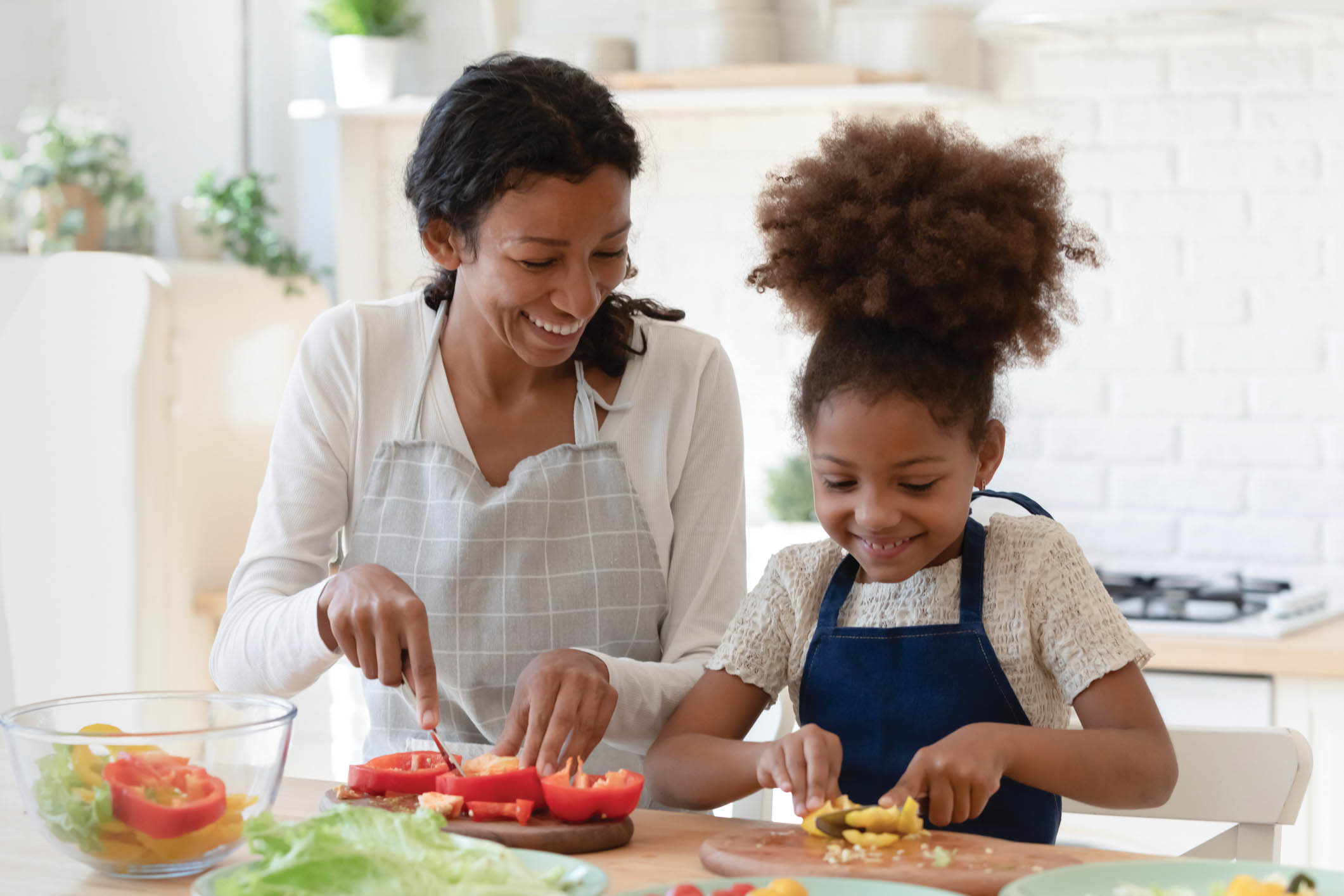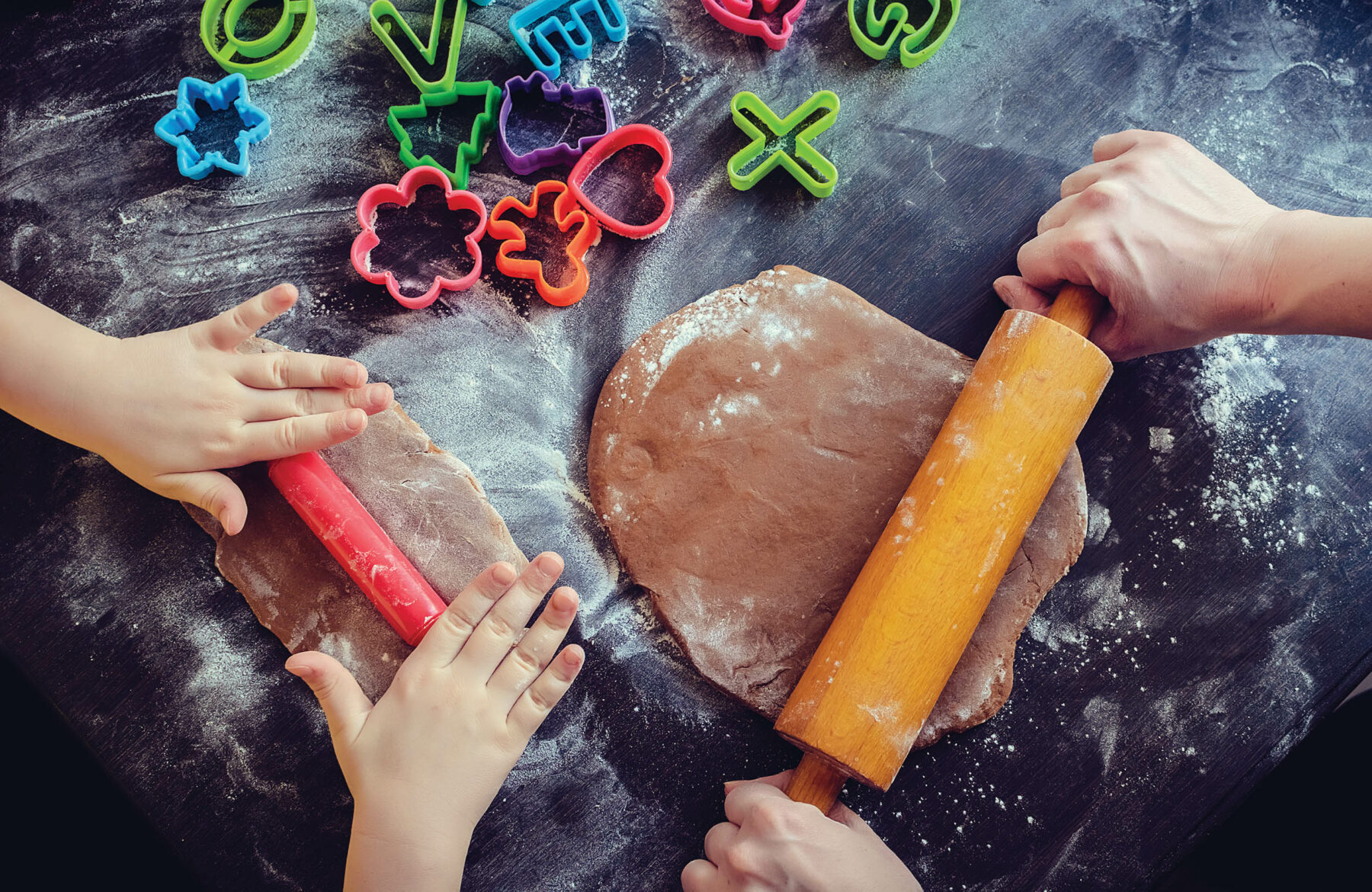How to Create a Montessori-Friendly Kitchen

January is finally here! Although this means holiday baking and festive dinner parties are coming to a close, that does not mean the family fun in the kitchen has to end. Spending intentional time in the kitchen with your kids is a wonderful way to make memories, build life skills and improve their nutrition.
Although the thought of tiny helper hands in your kitchen may seem a bit ambitious, children are adaptable and fast learners, given the proper guidance. Age-appropriate guidance can come in many forms. The Montessori method for learning is one way to give your children the chance to lead their own discovery process in an environment that sets them up for success.
What is the Montessori method?
The Montessori method was created by Italian physician and educator Dr. Maria Montessori in the early 1900s. Her approach to education has spread through schools and homes across the globe.
As outlined on the American Montessori Society’s website, the Montessori Method focuses on meeting a child’s needs through multiple areas of development. A Montessori-friendly learning environment takes into consideration a child’s cognitive, emotional, social and physical needs. The area is set up for exploration by giving opportunities for self-motivated growth.
How do I create a Montessori-friendly kitchen space in my home?
The Montessori method is about providing children of all ages with the opportunity to participate in developmentally appropriate hands-on activities.
Think beyond the play kitchen. Setting up a space for Montessori means making a child’s kitchen fully functional, meaning a child can choose to use the tools they are given to make themselves a snack.
How do I make my child’s kitchen functional?
For starters, swap the play fridge for one that is working. Keep it kid-sized. Compact refrigerators that fit six cans are a great option to consider. Fill it with small portions of fruits and veggies or beverages ready to be poured.
You can also provide a personal faucet for children to use. Celebrity chef Bobby Parrish and his wife Dessi have already done it for you! Watch this video for a tour of their young daughter’s functional kitchen to learn how to create a working sink, which will give your child the opportunity to get themselves a glass of water, wash produce or wash their hands.
As crazy as it sounds, knives are also a good option to teach children how to be helpful in the kitchen, keeping in mind safety first, of course. Amazon has options for kid-safe knife sets that are designed for real-life use.
Give them the tools they need to succeed! Why not turn “pretend play” kitchen tools into usable options? Depending on your child’s age, a kitchen set would be a great option to start teaching your child how to follow a recipe, measuring or using items such as a rolling pin.

Independence is everything. Keep a set of utensils, cups, plates and bowls in their cabinets so they can access them at all times.
Make sure to also keep food stocked. Periodically interchange the options for foods they have in their kitchen to encourage variety, introduce new recipes and keep their interest.
For children who are unable to read yet, cards with picture instructions are a practical method. You can create a step-by-step picture instruction book for tasks such as setting the table, buttering toast or pouring a drink. Of course, adult supervision is necessary, but having multiple examples of kitchen activities will benefit children as they develop their preferred learning style.
Supplying your child with cleaning tools such as a handled broom and dustpan while teaching them cleaning techniques will give them the foundations of lifelong habits.
As Maria Montessori once said, “When a child is given a little leeway, he will at once shout, ‘I want to do it!’ But in our schools, which have an environment adapted to children’s needs, they say, ‘help me to do it alone.’”
Why is it important to engage my child in activities in the kitchen?
According to Nemours KidsHealth, cooking can be used as a tool to develop healthy eating habits and language skills. Using a recipe introduces math skills in a fun way. Allowing your child to help in the kitchen gives them an outlet to build their self-confidence as they explore new things.
Getting your child involved in the cooking process is a way to introduce new foods to picky eaters. Allowing them to be involved may lead them to try new things.
The kitchen is a great place to help a child explore their senses. After all, their plate is their best learning tool! Engage their awareness of the things they smell, the texture of their food and the colors they see. The skies are truly the limit. Happy cooking little ones!






